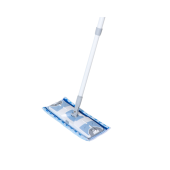Global unpredictability and digital transformation provide unprecedented challenges to organisations.
The procurement role has become more complex, and your organization’s capacity to capture value during change is crucial. What strategy does a company use throughout this process?
The first defence is knowledge, and the second is procurement software to automate and centralise Purchase-to-Pay procedures.
Poor purchase-to-pay strategy
Spending rashly is the easiest method to drain your company’s resources. Intelligent spend management cannot benefit you if your Purchase-to-Pay approach is weak and undisciplined. Sometimes being a maverick is great! Not your spending.
Purchase-to-pay
Purchase-to-Pay (P2P, Procure-to-Pay, and eProcurement) automates product and service purchases. Automation reduces costs, saves time, and improves procurement visibility. It simplifies requisitioning, purchase orders, procurement, and vendor payment.
Purchase-to-pay automation benefits
Purchase-to-Pay is part of an ERP suite. Traditional process automation is less efficient and accurate than e-procurement software. Cost savings and procurement value are its main goals. Benefits include:
- E-invoicing optimises internal processes to improve invoicing.
- Reduce purchase order processing time.
- It reduces errors.
- Improve supply chain and internal transparency.
- Share papers electronically to save time and money on office and mailing supplies.
- Live purchase data helps uncover workflow improvements.
- A complete accounts payable procurement solution.
- Improves cash flow and working capital availability through data-driven decision-making.
Purchase-to-pay vs. source-to-pay
For automated sourcing, Source-to-Pay adds a crucial step to Purchase-to-Pay. Source-to-Pay uses three-way matching and e-invoicing to automatically monitor vendor prices and payment conditions to identify the best vendor deals for your business. Combining these two automated processes improves supply chain management, functionality, and efficiency. Additionally, it will give your company more buying control.
How to find purchase-to-pay savings
The buy-to-pay matrix
Businesses sometimes use a matrix-based organisational or project structure to minimise departmental obstacles to save money. Additionally, team members’ insights can benefit other parts of the company. Compared to silo formations, this method boosts team agility and company value. Therefore, your company’s P2P approach should follow suit.
Key procurement-to-pay automation technology
Your company can decrease redundancy and centralise decision-making by automating purchasing, procurement, and accounts payable. Recent investigations by numerous organisations revealed remarkable insights into how corporations use this strategy to attain their aims. Centralization insights include:
- Business expense reduction averages $0.31 per $1,000.
- Supplier lead times averaged one day shorter.
- Average purchase order processing time reduction of one hour
- For a competitive edge, increased stakeholder coalitions by building novel supplier incentives and relationship models.
Executives must prioritise adopting a supplier relationship management decision matrix to reap the many benefits of automating and centralising these procedures.
Purchase-to-pay decision matrix creation
A finance department P2P process will focus on financial processes. If implemented for procurement, it will emphasise processes. These two teams can improve procedures by switching to matrix decision-making and eliminating silos. Consider these in your matrix:
- Skills and experience
- Price
- Innovation and complexity
- Risk assessment
- Level of control
- Value
- Competition
- Demand meeting ability
- Delivery Schedule
The vendor risk matrix
Understanding the vendor risk matrix can help your firm choose vendors without costly blunders. Using a scientific approach to risk assessment will help you create a vendor management policy with a feedback loop for evaluating current vendors. But doing this for each vendor takes time. To be competitive, a corporation must automate this procedure.
Avoiding buy-to-pay mistakes
Unexpected procurement issues waste corporate time and resources. Sometimes staff are too occupied with other business activities to notice inefficiencies. Your firm will slowly lose money there. Recognising and tackling common efficiency hazards will stop leaks.
Inefficiencies from vendor complacency
Standard procurement comprises many procedures, which might lead to supply chain management complacency. This means your organisation will absorb many inefficiencies in its own and vendors’ operations. Avoiding these mistakes can help you optimise the approval workflow.
Damaged shipments
You’ll get damaged shipments eventually. Disputes with shipping companies are possible if your company pays for shipping. If the vendor paid, you’re out of the loop, but you must alert accounts payable to avoid paying an invoice in full while finding a solution.
Outdated supplier data
When the accounts payable department finds erroneous supplier information, it can cause several problems. This can cause problems across your company’s departments. You can simply avoid this typical issue by automatically updating accounts payable when the purchasing department uses a new vendor.
Secret expenses
Vendor negotiating and hidden costs can be a major issue for an organisation. Pushing the approval workflow to keep your firm operating is easy when you require a good or service. The correct procurement software shows the whole cost of doing business with a vendor. You’ll know if you’re paying a handling fee, qualifying for discounts, and shipping expenses. Business clients use Order.co to negotiate the best price on any item.
Upgrade your purchase-to-pay process
If your company is still doing things the old way, you’ve probably slipped behind. You should now understand how automating purchase and procurement can boost cash flow, supplier management, early payment discounts, and more. As firms worldwide adapt fast to changing conditions, “Disrupt or be disrupted” rings truer than ever.
According to Deloitte’s 2019 Global Chief Procurement Officer Survey, executives worry about supply chain challenges, an economic slowdown, and mega-supplier risk. Over the past year, 61% of respondents believe procurement-related risks have worsened. How quickly talent models change and if procurement teams can deliver on strategy add to these issues. To be competitive, agile procedures are replacing old ones.
Successful P2P strategies require effective expenditure control. For instance, $470 million law firm Cozen O’Connor has offices worldwide. The company struggled to see their expenses accurately. Their buying power and negotiation power are much reduced.
The process Cozen O’Connor felt was convenient really cut into their revenues. Then Order.co was implemented. The firm gained 100% spend awareness and saved $60k–$70k per year on the same supply using our technology. What could your company do with that money?













